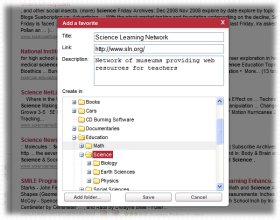|
Education
Web
Viewing 1-2 of 2 total results
using a variety of methods (e.g., straightedge and compass, patty/tracing paper, or technology). • Congruent angles or line segments • Midpoint of a line segment 7. Create two-dimensional representations (e.g., nets or projective views) for the surfaces of three...
1
0
using a variety of methods (e.g., straightedge and compass, patty/tracing paper, or technology). • Congruent angles or line segments • Midpoint of a line segment 7. Create two-dimensional representations (e.g., nets or projective views) for the surfaces of three-dimensional objects. 4.2.8 B. Transforming Shapes 1. Understand and apply transformations. • Finding the image, given the pre-image, and vice-versa • Sequence of transformations needed to map one figure onto another • Reflections, rotations
24
0
http://www.nj.gov/education/cccs/2004/s4_math.pdf#page=24
www.nj.gov/education/cccs/2004/s4_math.pdf#page=24
using a variety of methods (e.g., straightedge and compass, patty/<span class="highlight">tracing</span> paper, or technology). • Congruent angles or <span class="highlight">line</span> segments • Midpoint of a <span class="highlight">line</span> segment 7. Create two-dimensional representations (e.g., nets or projective views) <span class="highlight">for</span> the surfaces of three-dimensional objects. 4.2.8 B. Transforming Shapes 1. Understand and apply transformations. • Finding the image, given the pre-image, and vice-versa • Sequence of transformations needed to map one figure onto another • Reflections, rotations
26
0
http://www.nj.gov/education/cccs/2004/s4_math.pdf#page=26
www.nj.gov/education/cccs/2004/s4_math.pdf#page=26
patty/<span class="highlight">tracing</span> paper, or technology). • Perpendicular bisector of a <span class="highlight">line</span> segment • Bisector of an angle • Perpendicular or parallel lines 4.2.12 B. Transforming Shapes 1. Determine, describe, and draw the effect of a transformation, or a sequence of transformations, on a geometric or algebraic representation, and, conversely, determine whether and how one representation can be transformed to another by a transformation or a sequence of transformations. 2. Recognize three-dimensional figures obtained
3. Act on small-scale, personalized environmental issues such as littering and recycling, and explain why such actions are important. Building upon knowledge and skills gained in preceding grades, by the end of Grade 4, students will: 6.6.4 A. The World in Spatial Terms 1. Use physical and political...
1
0
3. Act on small-scale, personalized environmental issues such as littering and recycling, and explain why such actions are important. Building upon knowledge and skills gained in preceding grades, by the end of Grade 4, students will: 6.6.4 A. The World in Spatial Terms 1. Use physical and political maps to identify locations and spatial relationships of places within local and nearby communities. 2. Describe and demonstrate different ways to measure distance (e.g., miles, kilometers, time). 3. Estimate
35
0
http://www.nj.gov/education/cccs/2004/s6_ss.pdf#page=35
www.nj.gov/education/cccs/2004/s6_ss.pdf#page=35
3. Act on small-scale, personalized environmental issues such as littering and recycling, and explain why such actions are important. Building upon knowledge and skills gained in preceding grades, by the end of Grade 4, students will: 6.6.4 A. The World in Spatial Terms 1. Use physical and political <span class="highlight">maps</span> to identify locations and spatial relationships of places within local and nearby communities. 2. Describe and demonstrate different ways to measure distance (e.g., miles, kilometers, time). 3. Estimate
|
